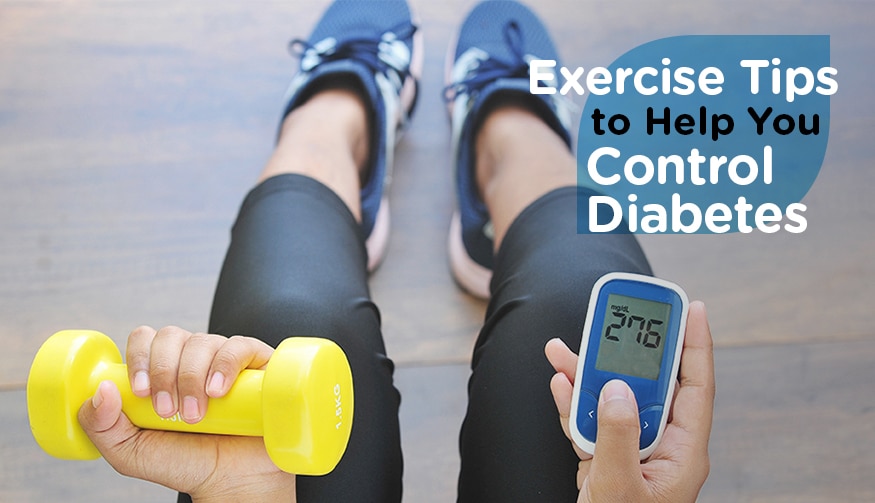Exercise is a very effective way of lowering your blood sugar and consequently controlling your diabetes. When you exercise regularly and achieve long-term blood sugar control, you also lower your HbA1c level, which is a measure of your average level of blood sugar over the past 2 to 3 months.
Exercise lowers blood sugar in two ways. By increasing insulin sensitivity, exercise makes your muscle cells utilize any available insulin more efficiently. This makes your body burn up more glucose (sugar) during and after exercise. Also when your muscles contract during exercise, your cells are able to take up glucose and use it for energy whether insulin is available or not.
According to the American Diabetes Association, individuals with type 2 diabetes should aim for about 30 minutes of exercise at least five days a week. A combination of aerobic exercise and resistance/strength training is ideal. For an effective and safe exercise regimen, follow these expert tips:
Before exercising
- Get your doctor’s clearance before starting your exercise program. Make sure your doctor reviews your diabetes medications. Your doctor can also tell you what your target blood sugar range should be before and after exercising.
- Check your blood sugar. The results of your blood sugar checks can help you prevent hypoglycemia (low blood sugar) and see how your body reacts to different forms of exercise.
- Carry at least 15 grams of a fast-acting carbohydrate in case you develop low blood sugar during or after exercise. This can be a half-cup of fruit juice or regular soda, or a tablespoon of sugar or honey.
- Wear well-fitting shoes that are designed for the exercise you’re doing.
- Wear a medical ID bracelet or carry a medical ID in your pocket. These medical identification tags will alert first responders that you have diabetes and might require immediate attention.
- Drink plenty of fluid.
- Warm up for 5 to 10 minutes.
During exercise
- Stop exercising immediately if you become shaky, anxious, or more sweaty than usual, or feel a change in your heartbeat.
- Check your blood sugar. If it is low, take your fast-acting carbohydrate.
After exercising
- Do 5 to 10 minutes of cool-down and gentle stretching.
- Rehydrate by drinking lots of fluid.
- Check your blood sugar to make sure it’s in your target range.
- Inspect your feet for blisters or sores.
Product Recommendation:









